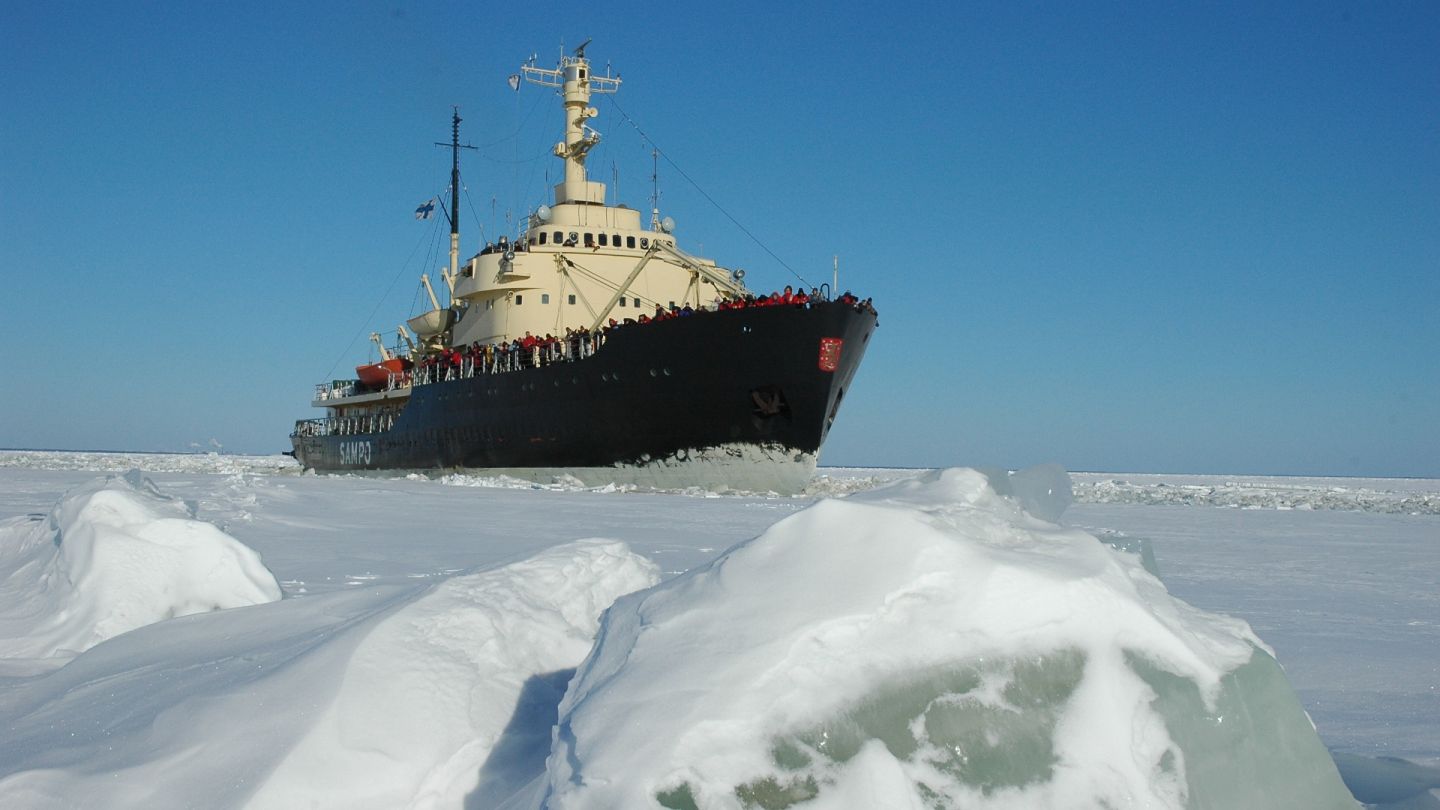A gale is gathering force on a January evening off the coast of Kemi, and Captain Teemu Alstela is absorbing the shipping warnings and surveying the list of vessels entering and departing from the Lapland ports of Kemi and Tornio on the bridge of the icebreaker Otso.
It is the start of Alstela’s ten-day shift and the ship has been stocked with fuel and food. Since the ship is ‘docked’ in ‘fast’ ice several kilometres offshore it doesn’t roll, but you can hear the bitter wind whistling outside. Powerful, giant spotlights illuminate the ice that spreads into the darkness, a continuous blue-white plain.
By the time the first thin daylight emerges around 9 a.m., the Otso has left its ice dock and has assisted the passage of at least half a dozen freighters along the ‘fairways’ through the ice. In wind-free conditions this is a relatively straightforward process, but the immense pressure caused by high winds can trap a vessel. Conditions can change quickly, and sometimes the ships have to be towed by the icebreaker in either direction.
Breaking the ice
You only have to glance at the map to understand why it’s so important for Finland’s economic health to keep sea traffic moving. The Baltic Sea forms a natural barrier between the country and the rest of Europe, and nearly 80% of imports and close to 90% of exports move through Finnish harbors. When temperatures plummet to below minus 20 Celsius in winter, ice clogs up the majority of those ports, calling for special measures.
Lapland’s own ports of Kemi and Tornio, at the very northern end of the Baltic in the Bay of Bothnia, are guaranteed significant ice cover every winter, persisting for around four months. So it’s in these frozen waters that you have the best chance of spotting members of Finland’s icebreaker fleet hard at work. The fast ice in these brackish waters can be as thick as 70 or 80 centimetres, while ridges of fragmented ice that form in windy weather measure up to 25 metres top to bottom.
Finnish snow-how with tradition and experience
The icebreaker fleet comprises nine vessels of various age and class operated by state-owned company Arctia Oy. It represents the same kind of Finnish ‘snow-how’ technology and ice-busting expertise that keeps the country’s airports open, including those in Lapland above the Arctic Circle, even in the deepest frost and fiercest blizzard.
It’s know-how with heritage: Finland’s first icebreaker, Murtaja, entered service in 1890, and the technology reached a new pinnacle in 2016 with the introduction of the powerful and innovative Polaris. Tourists even have the chance to sample a short icebreaker cruise on the decommissioned Sampo, which operates from Kemi’s deep-water harbour at Ajos.
– The situation with the ice changes every year and from port to port, but we need assistance in even the mildest winters, says Jaakko Rantsi, CEO of the Port of Kemi.
Competitive way to transport high volumes of cargos
– The Port of Kemi handles two million tonnes of cargo annually, about 75% of which is paper or other forest products, with most of the rest accounted for by liquid fuels. We expect mining products to take up a bigger proportion of exports in the coming year. Another three million tonnes is handled at the other Lapland port, Tornio, where the harbor is rented by the Outokumpu steelworks.
When volumes of cargo are high, it is more cost-effective to transport goods by sea than by road, rail or air. Government policy, as directed from the Ministry of Transport and Communications, supports an increase in investment in sea transport infrastructure.
– It’s very expensive to maintain overland transport systems, says Rantsi.
– We have a lot of unused potential in sea cargo, and that’s something we should promote, because it’s the easiest and most sustainable way to reduce costs in relation to maintenance of infrastructure. I think in the future the utilization will increase in ports and sea traffic, as there is more digitalization and automation. The automation of ports is already moving ahead fast. This will bring down the cost of sea cargo in the future.
Interested in other related articles?
More about Port of Kemi
Year round shipping routes in Lapland
The world’s only Ice-breaker cruiser Sampo



